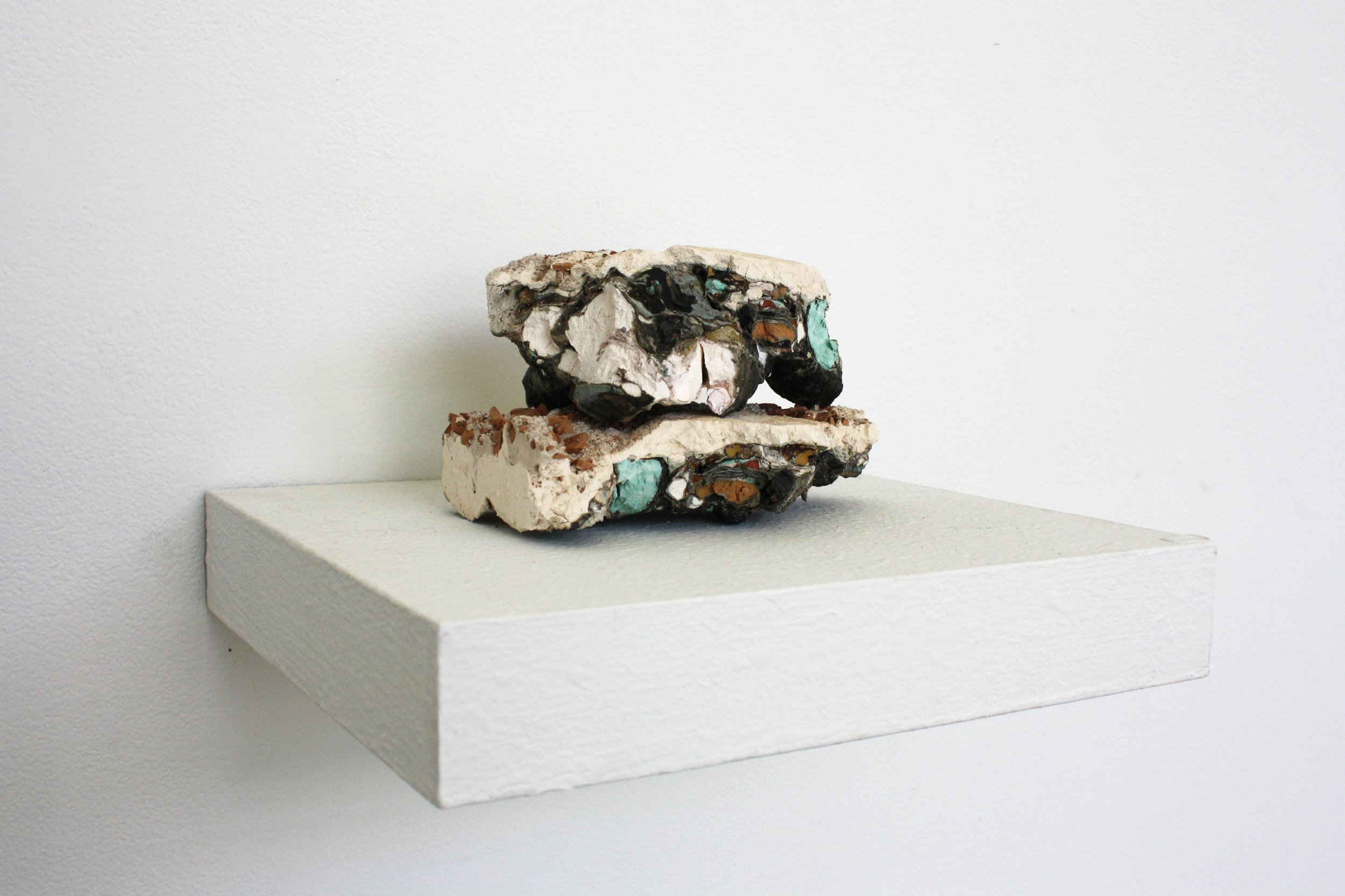Extraction & Repair, In Coordination with The Tyler Glass Sustainability Micro-Symposium.
During my research at Tyler School of Art and Architecture and in collaboration with Program head Jessica Jane Julius, I helped bring together a show in coordination with The Glass Program’s Sustainability Micro-Symposium. Throughout the process, I spoke with the exhibiting artists about how issues of sustainability inform their practice and used these conversations to write a supporting essay for the exhibit.
Artists left to right: Asher Quentin Riley, Rae Helms, Ivy Jewell, Mollie Hansen, Laura Sallade, Meredith Tenney Free, John Dillard.
Inward, Outward, Through & Around, by Laura Sallade
An ecology can be many things; whether a body, family, an institution, society, the environment, or universe, everything is a system. On various registers and in many sectors, leaders in the arts, education, and sciences are acknowledging the importance of understanding how organisms, people, and materials interact with their environment. The challenge for broader systems informed thinking is that we live in a world structured by binaries: human and non-human, male and female, democrat and republican, producer and consumer. These binaries shroud the true entangled nature of all things and detract from the cyclical processes that sustain social and material ecologies.
Artist: Victoria Ahmadizadeh Melendez
Showcasing Tyler faculty, alumni, MFA candidates, and undergrads, Extraction & Repair forms its own ecosystem, bringing together artists at different stages of their careers and working across diverse modes of making and material approaches. These perspectives include personal narratives of mental sustainability, the ecology of material sourcing and iterations that reveal parallels and intersections between the two. Unified but not uniform, these artists highlight, mourn, and rethink the fragility, complexity, and resilience of these systems. Systems of nature, community, and body that are beyond return, but not necessarily beyond repair.
Considering what repair might look like in our fractured world requires inverting the hierarchies of value. Both Kayla Cantu and Laura Sallade are rearranging values on different registers by centering the imperfect surface textures of discarded materials. While Kayla’s Trimmings questions how value is ascribed to identities through the presence and absence of stretch marks or scars, Laura’s modular installation uses breakage to highlight material genealogy and the beauty that comes from centering repair in the life of objects. Similarly, Davis Thal and Winton Petty’s vessels manifest the desire to create from what is at hand, inviting a reconsideration of consumption.
Artist: Ivy Jewell
Many of these works hold a lens that looks outward to materials and eco-criticality, while others look instead inward to the interpersonal and psychological, yet the two viewpoints are not opposing dyads. Moreover, it’s impossible to speak about environmental justice without speaking about human dignity, as some of these artists emphasize. By reintegrating and recycling ceramics, Ivy Jewell creates a material feedback loop in Leaching Stones as a part of a practice that examines how trauma exists in both the body and land. Additionally, Meredith Tenney-Free embeds termite pattern logic into a glass plate as she investigates the empathetic relationship between humans and the planet.
Artists left to right: Paige Morris, Kristen Neville Taylor
These efforts to sustain a more just world cannot be accomplished by any one person. Supportive relationships form a series of interconnected systems that uphold every solution. Maria Missaoui’s work examines how all growth is dependent on conditions of nurture and cultivation, while Paige Morris’s Overgrown works through themes of friendship, growth, and grief. Gray Cimini and Naz Khoury both speak to the importance of engaging a community with a responsive openness. While Gray pays homage to the process of sustaining and healing a community, Naz has made a call to action, showing how healing our community is sometimes uncomfortable.
Artist: Katie Receveur
While this diverse set of works does not provide definitive answers, it does offer paths for us to ask better questions. How do we thoughtfully coexist with one another while remaining attuned to the matter that moves in, around, and through human bodies? How can we ensure that our efforts contribute to a more mindful way of being in the world? Each of these works is a microcosm within a larger network of insights, examining the fragility of our ecosystem, the resilience of communities, and the interconnected systems that sustain and challenge us. Together, they remind us that repair is not a singular act, but an ongoing process that demands care, collaboration, and a readiness for transformation.




